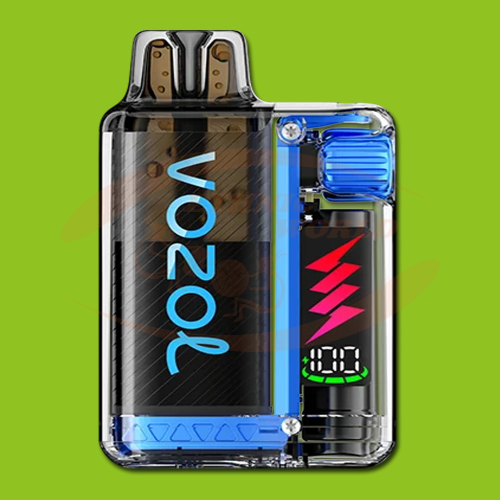
Growing cannabis for the first time can be a real challenge, especially in the final stages of cultivation. After months of nurturing the plants, from seed to mature specimens, the most anticipated moment of the whole cycle arrives... the harvest! Let's take a look below at everything you need to know about harvesting, cutting and drying cannabis to get the perfect peak.
Growing Cannabis as a beginner
Harvesting
Deciding the best time to harvest your cannabis is not an easy task: should you stick to the flowering time on the seed packet or is it better to rely on bud size and density?
There are five factors to consider before harvesting your cannabis plants:
Appearance
The first thing to consider when deciding whether plants are ready to harvest is the appearance of the buds once the recommended flowering period has passed. That said, yield should never be the sole criterion, nor should the ratio of white to brown pistils be relied upon alone. In addition to the appearance of the plants, the degree of maturity of the trichomes and the thickness of the calyxes should also be taken into account.
Flowering period
The flowering period recommended by the seed bank may vary depending on indoor or outdoor growing conditions, lighting, fertilisers applied, phenotype or size of the plant. Therefore, while it is advisable to mark the harvest date on the calendar so as not to lose sight of it, do not hesitate to exceed it if the plant in general and the calyxes and trichomes in particular do not seem mature enough.
Calyx thickness
Growers are often impatient and harvest before the calyxes have had time to swell and pile up sufficiently. Another common misconception is that if the buds are fox-tailed, it is because they have been over-fertilised, when in fact this type of elongated shape is often due to the inherent characteristics of the strain, and is corrected simply by giving the flowers time to swell and develop fully with a good cannabis fertiliser.
Trichome developmen
Trichomes are the part of the plant that contains the essential oils, terpenes and cannabinoids that make each strain unique. If you look at them under the microscope, you will see that they consist of a filament and a transparent sphere, which is precisely the part you need to look at to get an idea of how mature they are and therefore the potency, effect and terpene profile developed by the plant so far. As a general rule, if the trichomes have a silvery or milky colour, the effect will be lighter, whereas if they have developed amber tones with reddish undertones, the potency will be greater.
Rinsing phase
When chemical fertilisers are used, the mineral salts they contain gradually accumulate in the plant tissue. For this reason, during the two weeks before harvesting, only water should be used to clean the substrate and the root zone and force the plant to eliminate the accumulated reserves, avoiding that the excess salts alter the taste. Therefore, no matter how mature the plant is, if the necessary 14 days of rinsing have not elapsed, the harvest will still have to wait.
Things to avoid when harvesting cannabis plants
- Keep buds with mould and leaves with powdery mildew symptoms.
- Harvest before the flavour and effect have reached their full potential.
- Harvest according to the ratio of white to brown pistils.
- Harvest too late, when the terpenes have already started to degrade.
Drying cannabis flowers
One of the worst mistakes you can make when growing cannabis is to underestimate the importance of drying, which, if done hastily or superficially, inevitably leads to poor quality flowers. Before harvesting, you need to decide whether you want to trim before or after drying.
Dry or wet pruning?
Wet pruning involves separating the buds from the plant before drying them, also removing all the leaflets they contain. This is the method most often chosen by growers who like to get to work immediately. It is also an excellent way to obtain plant material for the preparation of live resin, which offers more interesting and complex terpene profiles because the material is not decarboxylated.
If, on the other hand, one is not attracted to the idea of handling the fresh tops, or if one has too many plants for this method to be practical, it will be more practical to dry them first. In this case, the large leaves should be removed and the whole plant hung upside down to dry for 10-14 days, after which pruning can be carried out.
During dry pruning, it is recommended to use a tray or sieve to collect the trichomes that come off during the process. Unlike bubble hash, this pollen can be smoked immediately, without having to be dried.
Manual and mechanical cutting
Manual trimming is the traditional and best method, but it is also true that for large-scale production this method is often impractical and electric trimmers are needed.
Those in the know tear their hair out when they hear the name mechanical stripping, but like it or not, this method can be a lifesaver when a large number of flowers need to be stripped in a short time, even if a lot of touching up is sometimes necessary and the result is less accurate than when the work is done by hand.
How long do the tops take to dry?
The tops should be dried for 14 days, regardless of the type of pruning chosen (dry or wet). If the flowers are very small, they will be ready to be smoked or tanned after 10 days, but we repeat that the normal time is two weeks.
As for the conditions of the drying area, which can be a grow box or a room with an air extractor, a temperature of about 15ºC and a humidity of about 50% are ideal.
How can you tell if the buds have been properly dried?
- They are reduced in size and increased in density.
- They are dry to the touch and have a strong aroma.
- The shoots have become paler and more brittle.
- All traces of chlorophyll smell have disappeared.
- Although dry, the buds are still sticky and have not lost their tone.
Curing cannabis flowers to improve taste, aroma and effect.
As with curing hams and cheeses, curing cannabis enhances the taste and adds value to the final product. However, this process, which involves oxidation, should not be confused with simply storing the buds.
It is therefore not enough to place the buds in an airtight glass container, it must be opened for ten minutes a day so that contact with the air promotes the gradual breakdown of THC and CBD, and the effect becomes more physical and narcotic.
Conclusion
Every indoor and outdoor plant grows and matures differently, and guiding each variety to the right time for rinsing, harvesting, pruning and finally drying and curing is something that can only be learned with practice. But when you do, you will be one step closer to getting the best cannabis buds imaginable. Like everything in life, this is a process that can go wrong at any time, which is why it is important to consider all the factors involved before you start harvesting.



















